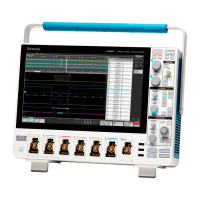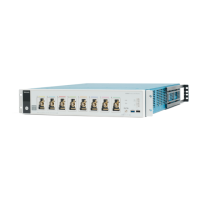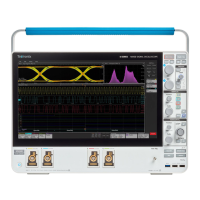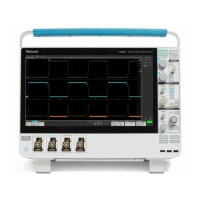8. Determine the channel you want to use as your reference.
9. Double-tap the Channel badge of a channel other than the reference channel and tap the Other panel.
10. T
ap the Deskew field and use the multipurpose knob to align this channel with the reference channel waveform such that the
waveforms cross the trigger point at the same time. For fine adjust, double-tap the Deskew field to open a number pad.
11. Repeat steps 9 and 10 for each additional channel you want to deskew.
12. To deskew additional channels:
a. Disconnect all probe tips except the reference probe from the Probe Compensation connections.
b. Connect up to three probe tips and ground leads to the Probe Compensation connector (maximum of four channels at a time).
c. Repeat steps 3 through 12 for the additional channels to deskew.
Deskew analog input channels
Critical Time measurements on multiple channels require that all probes be adjusted, or deskewed, to compensate for signal timing
differences between probes.
Note: Once probes have been deskewed for a particular channel, you should only use the probes on the channels for which they
were deskewed, when taking critical
Time measurements.
Measurement method
Use the following procedure to more accurately minimize timing dif
ferences between probes.
1. Connect all probes that you want to deskew to the oscilloscope.
2. Connect up to four probe tips and ground leads to the Probe Compensation connector (maximum of four channels at a time).
3. Turn on all the channels of the first four channels that you want to deskew.
4. Push the Autoset button.
5. Change the vertical Scale of all active channels to 500 mV/div and adjust the vertical Position so that the waveforms are centered in
their respective slices.
6. Determine the channel you want to use as your reference.
7. Tap the Measure button and tap the Time Measurements panel.
8. Select the Delay measurement and set your chosen reference channel as Source 1 and your channel being deskewed as Source 2,
then tap the Add button.
9. Double-tap the Channel badge of the channel being deskewed (Source 2) and tap the Other panel.
10. Tap the Deskew field and use the multipurpose knob to align this channel with the reference waveform such that the measured delay
between channels becomes a minimum. For fine adjust, double-tap the Deskew field to open a number pad.
11. Double-tap the Delay measurement badge and set the Source 2 channel to the next channel to deskew.
12. Repeat steps 9 through 11 for each additional channel you want to deskew in the first set of four.
13. To deskew additional channels:
a. Disconnect all probe tips except the reference probe from the Probe Compensation connections.
b. Connect up to three probe tips and ground leads to the Probe Compensation connector (maximum of four channels at a time).
c. Repeat steps 3 through 13 for the additional channels to deskew.
Quick visual method
Use the following procedure to visually align waveform edges to compensate for timing differences between probes.
1. Connect all probes that you want to deskew.
2. Connect up to four probe tips and ground leads to the Probe Compensation connector (maximum of four channels at a time).
Configure the instrument
2 Series MSO MSO24 and MSO22 55
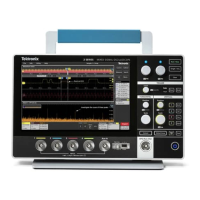
